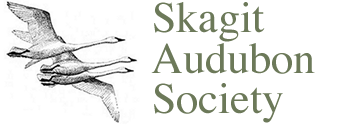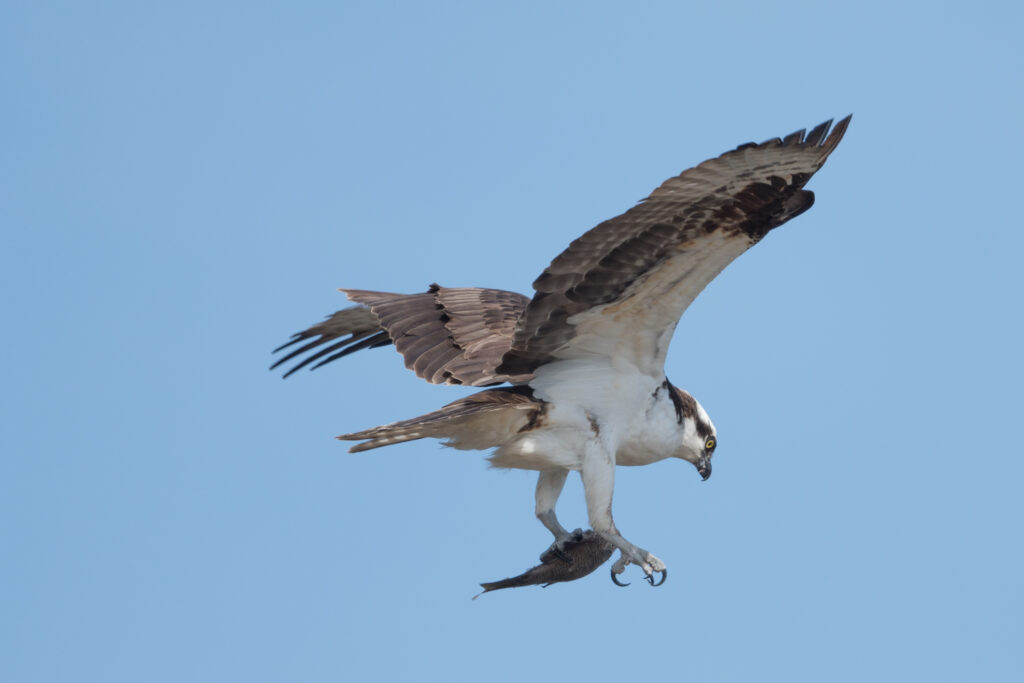MEET THE OSPREY (Pandion haliaetus) - by Jeff Sinker
Commonly found along shallow fresh or saltwater habitats, this large North American hawk, with its dark brown body and sparkling white head, is impossible to miss either in flight or perched on top of a massive nest surveying the surrounding territory.
Eating almost exclusively live fish, which it positions head facing forward in its talons to reduce wind resistance, the Osprey is unable to dive deeper than about three feet below water when hunting; however, it can and will catch fish schooling at the water’s surface. Captured fish are usually 6-13 inches long and weight one-third to two-thirds of a pound. Ospreys have a reversible outer toe that gives them a grasping capability with two toes in front and two toes behind plus barbed sole pads to aid in keeping their grip firmly on the slippery fish.
Migrants may fly long distances-over two thousand miles-in a single year between their summer and winter grounds. Males usually arrive just before females and select the nest site, which can be a treetop, snag, cliff, man-made platform, or cellphone tower. The male gathers most of the nesting material, including sticks, bark, vines and sadly, sometimes baling twine and plastic line, which have been documented to entangle chicks in the nest, resulting in injury or death.
A successful pair devotes over three months to raising a single brood (1-4 chicks). The eggs do not all hatch at one time, so if food is scarce, younger chicks may not survive. Ospreys rarely forage beyond 12 miles of the nest and in northern climates, they depend on ice-free locations for the duration of their breeding season. Ospreys also do well around humans and have rebounded successfully after long-term pesticides such as DDT were banned.
Learn more: www.allaboutbirds.org/guide/Osprey. Photo: Osprey by Joe Halton




